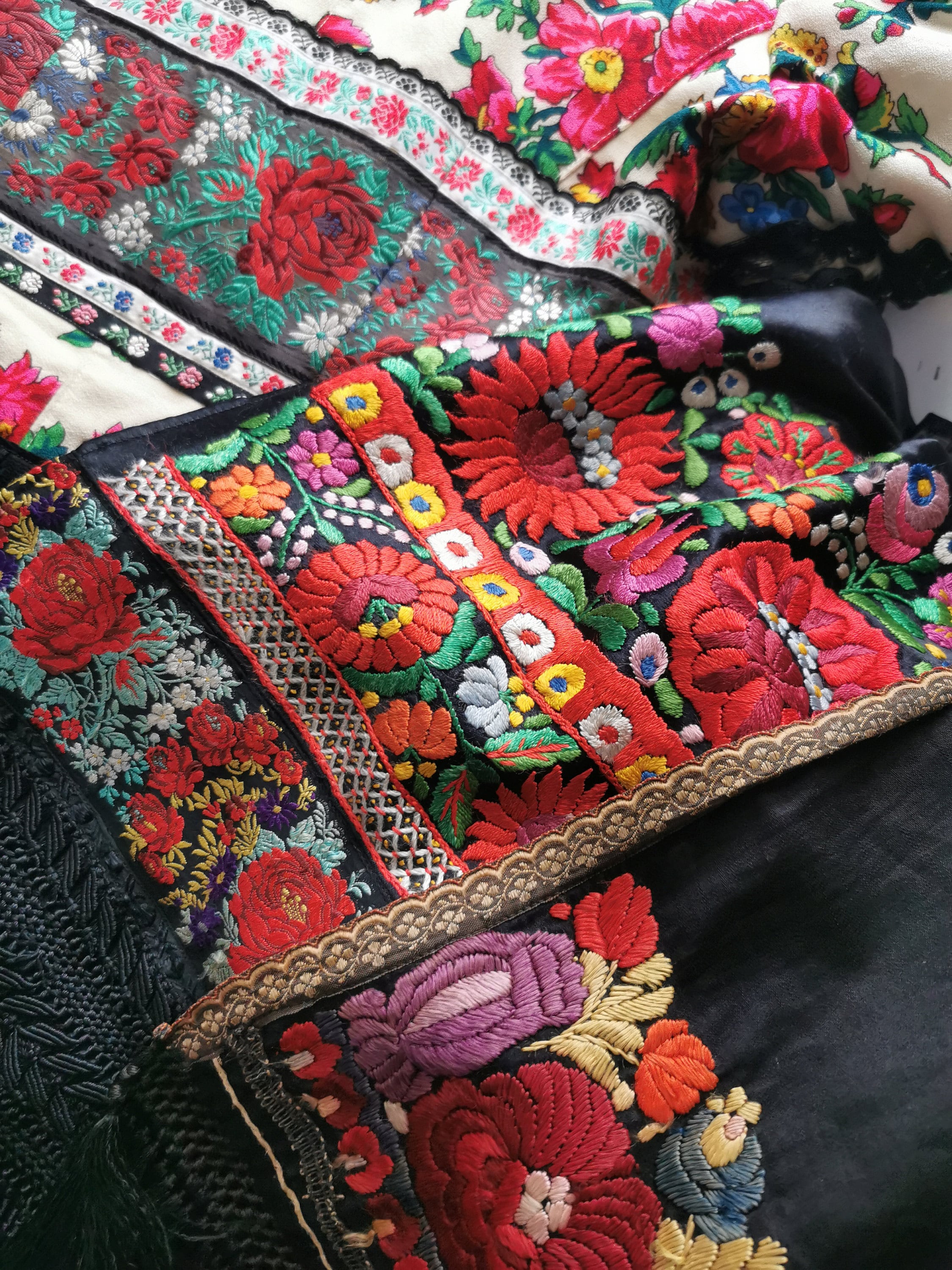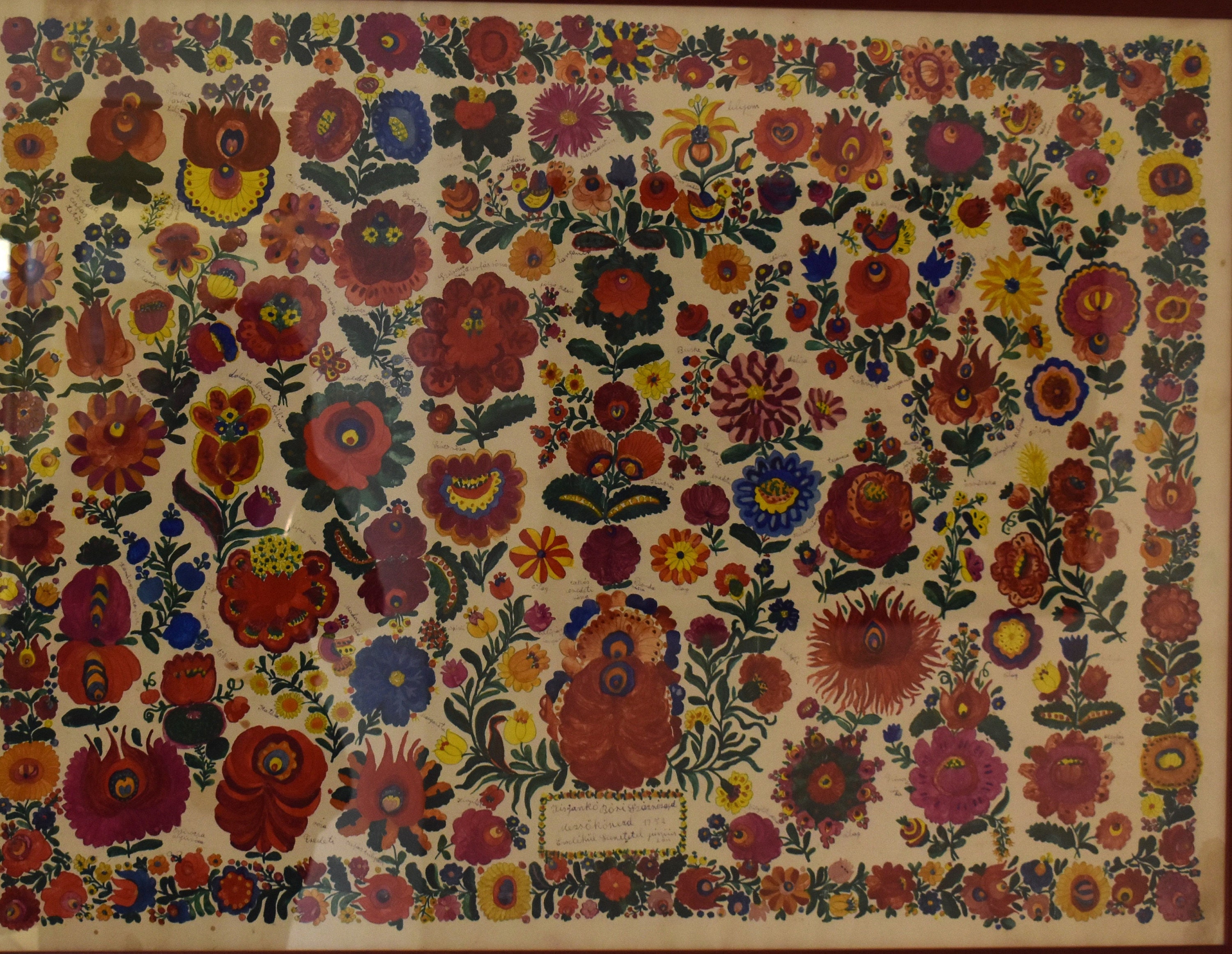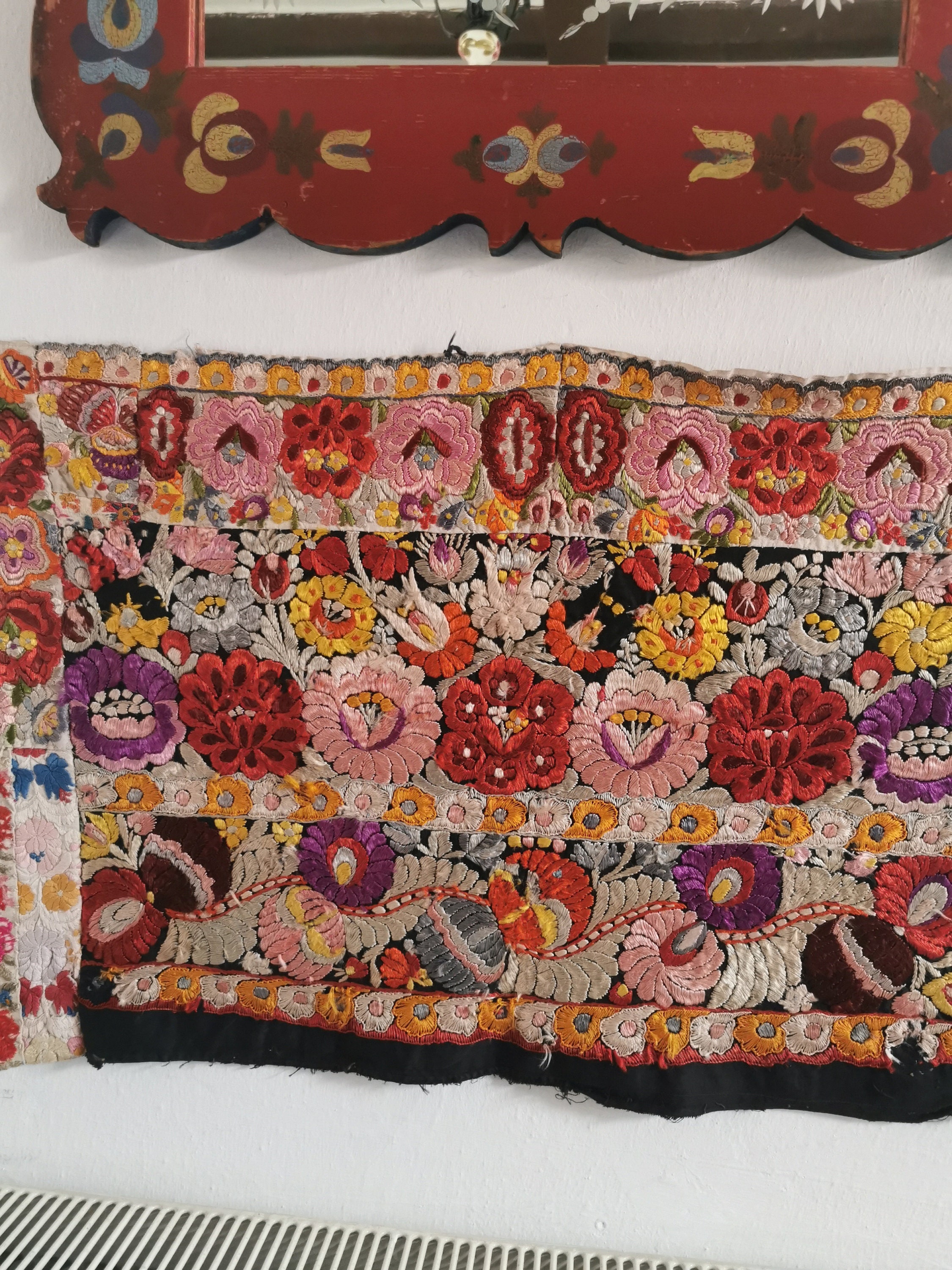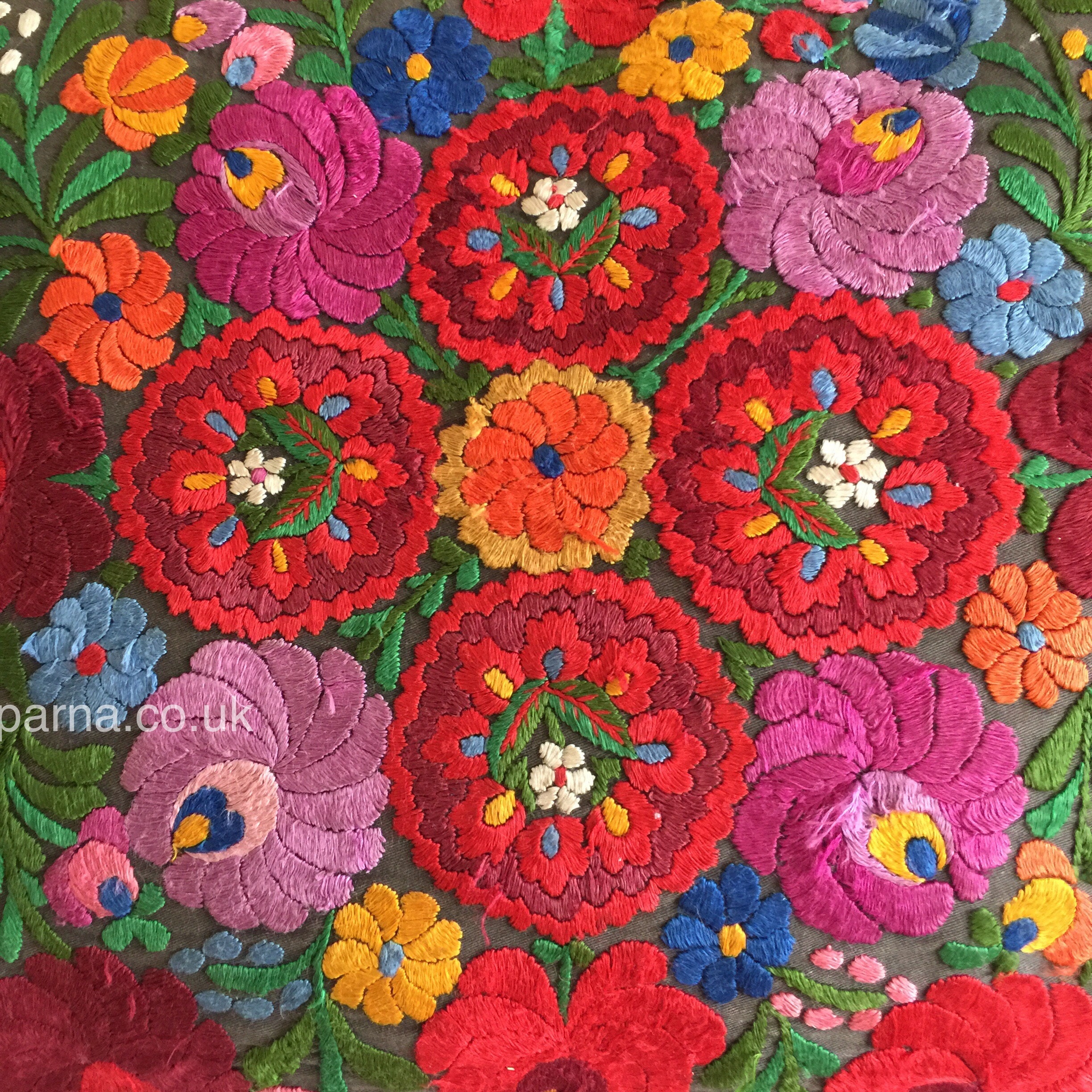Matyo embroidery is a distinctive style of Hungarian folk art originating from the Matyo people who settled in 3 settlements in Northeast Hungary in the 18th century (the town of Mezokovesd and the villages of Tard and Szent Istvan). It has been inscribed on the Unesco list of Intangible Cultural Heritage since 2012.

Born in 1876 Bori Kis janko was the mother of Matyo embroidery, she was a pattern designer and embroiderer, her former house in the old town of Mezokovsed can be visited. Some of her original designs are on display in the Matyo Museum in Mezokovesd

Embroidered in silk floss or wool mostly using satin stitch, Matyo embroidery mostly features colourful stylised flowers. The Matyo roses being the most common and well-known.

Traditionally the embroidery covered most of the cloth with little of the ground cloth visible, the base cloth may be home-loomed hemp, felt or cotton in black or neutral. More recently synthetic fabrics may be used which to my eye anyway are not as attractive but easier to work with
.Many of the more recent examples have less dense embroidery. The embroidery was used to adorn household textiles and folk costumes. The long fringed table cloths and wall hangings are particularly sought after
The Matyo Folk Art Association, based in Meszokovesd can often be found at festivals, demonstrating techniques and displaying some of their craft. I took thi
s image at the Festival of Folk Arts , held in Budapest around the 20th August and yes I did buy the cushion cover!


#matyo #matyoembroidery #matyofolk #folktradition


